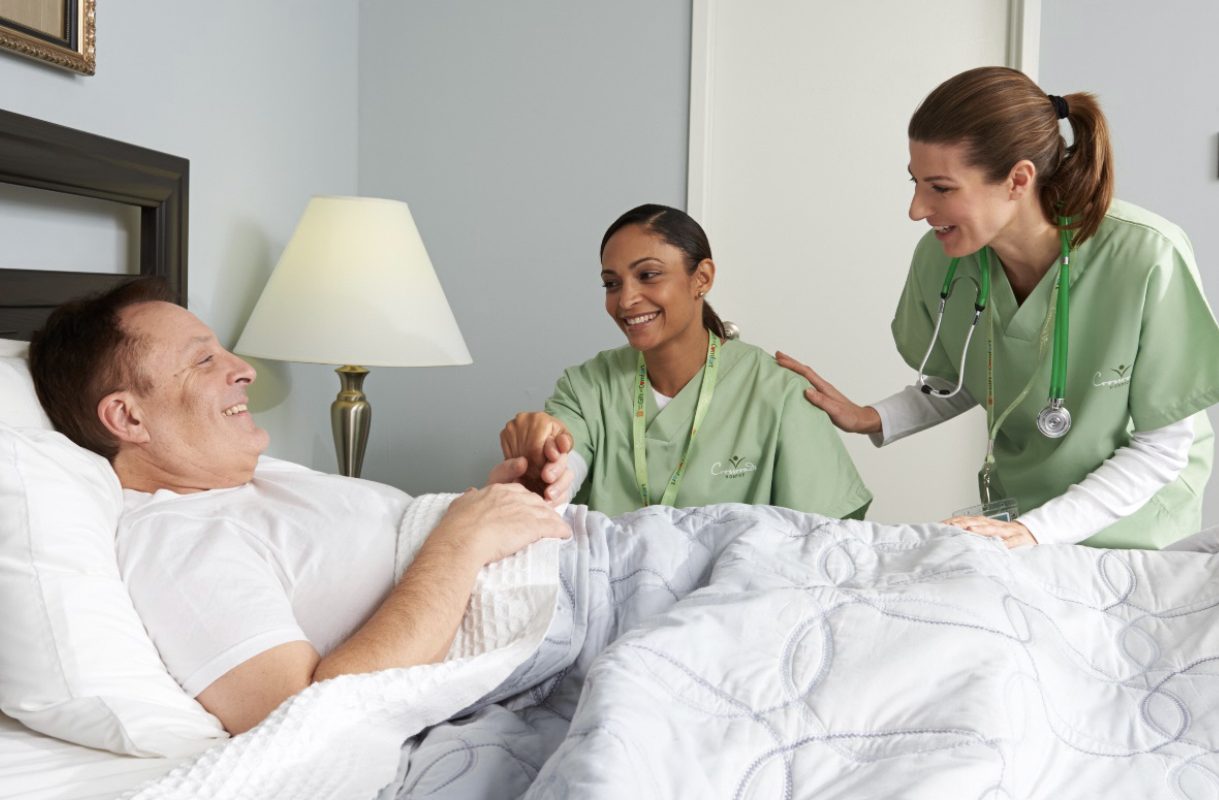Benefits Of Hospital At Home Programs
Hospital at home or HAH enables senior or elderly patients to be treated in the comfort of their homes. Geriatric services at home are a combination of remote monitoring and home visits by the healthcare provider to check on patients.
Acute level care at par with a clinical setting is offered to the patients in a hospital at home programs where the elderly are more relaxed and not as anxious. In familiar surroundings, when elderly patient is treated, they are less likely to be alarmed. Senior-aged patients need to be calm and composed and not get stressed during their treatment plan so that they respond better.
Why is a HAH a better option for geriatric services?
Hospitalization is not the solution for elderly patients with age-related impairments that disallow mobility without support. It creates additional stress for a person over eighty years of age to visit a local clinic to get their vitals checked or for the administration of treatment.
An alternative care model like HAH programs includes telehealth services and in-person visits for administering antibiotics or intravenous fluids. A nurse practitioner or a clinician oversees the program whereas a telehealth nurse monitors them through remote patient monitoring systems to check the physiological data.
Hospital-at-home programs have successfully shown positive outcomes and have become indispensable for palliative and geriatric patient care. Athletes recovering from physical injury and seniors suffering from age-related health conditions can be treated at home, without causing excessive pressure of patient influx at hospitals.
Here are some benefits of a hospital at home programs that will encourage other clinics and healthcare centers to adopt the model:
- Comfort and personalized care
The elderly and patients who need post-trauma care cannot move easily. If comfort is the focal point of the delivery model, then home care will help elderly patients stay at the house, among their loved ones and pets. The comfort derived from familiar surroundings and the presence of family members cannot be recreated at a hospital. Patients who need home care usually are suffering from progressive conditions affecting their memory and physical mobility. They are already confused and can get scared in unfamiliar settings.
Home care can be tuned to sync with a family’s schedule to personalize the care model. Depending on the duration of care required, either a full-time service or a part visit can be provided.
- Improved patient outcomes
Home care helps elderly patients recover faster. When they are in familiar surroundings they cooperate and don’t resist their care provider. They take their meds on time, rest up, eat a good diet, and exercise moderately to move their limbs.
Reports cite that home care patients have responded better to their treatments and have far less risk of being exposed to clinical infections that are common at hospitals.
Acute hospital-level care can be provided through HAH programs whereby tests including ultrasounds, ECG, and X-rays can be conducted. Treatments that include intravenous medication or a nebulizer for oxygen therapy can be administered at home. The physiological signs like blood pressure and oxygen levels are measured remotely through wearable devices.
When the most critical clinical functions that are required for patient care can be enabled at home, it is a wise option to choose a HAH program for the elderly
- Helps reduce healthcare costs holistically
The home care model is charged by the hour and reduces or minimizes out-of-pocket expenses that are likely during hospital admissions. Additionally, because of a higher patient engagement level, a better response rate with improved patient outcomes and experience reduces the need for readmissions in a hospital. This factor translates into bills that are saved by the healthcare industry and the affordable care model. In the long run, the amount saved through even simple tasks figures into a sizable figure.
Conclusion:
If it were not for the pandemic, despite game-changing software with portable imaging equipment for X-rays and RPM systems, home care would not have gained the traction and acceptance that it finally is getting.
Hospital-at-home programs are an effective model that has been rated by patients and their family members as a better care model than regular clinics or hospitals. With innovation that is spearheading the changes that suit the model, it is a good consideration to be added to the service of your clinical or hospital


